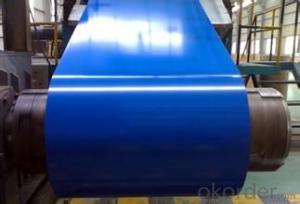Steel rebar, also known as reinforcement bars, plays a crucial role in the construction industry. These bars are made from steel and are used to reinforce concrete structures. They provide strength and stability to the structures, ensuring their longevity and durability. In this article, we will explore the different sizes of steel rebar available and their applications in construction projects.
Why Steel Rebar Matters
Before diving into the different sizes of steel rebar, it’s essential to understand why these bars are so important. Steel rebar is designed to resist tensile forces, which are the forces that tend to pull a structure apart. Concrete, on the other hand, is excellent at resisting compressive forces, which are the forces that tend to push a structure together. By combining these two materials, we can create structures that are both strong and stable.
The Basics of Steel Rebar Sizes
Steel rebar comes in a variety of sizes, each with its own unique properties and applications. The size of a rebar is typically measured in millimeters (mm) and is determined by its diameter. Some common sizes include 6mm, 8mm, 10mm, 12mm, 16mm, 20mm, 25mm, 32mm, and 40mm. Each size has its own specific uses and is chosen based on the requirements of the project.
Smaller Sizes: The Unsung Heroes
While larger rebar sizes tend to get more attention, smaller rebar sizes are equally important. These bars, such as 6mm and 8mm, are often used for light residential construction projects. They provide the necessary reinforcement for smaller structures without adding unnecessary weight or cost.
Medium Sizes: The Workhorses
Medium-sized rebar, such as 12mm, 16mm, and 20mm, are the workhorses of the construction industry. These sizes are versatile and can be used in a wide range of applications, from residential to commercial projects. They offer a good balance between strength and cost, making them a popular choice for many builders.
Larger Sizes: The Heavyweights
For larger construction projects, such as bridges, high-rise buildings, and other heavy-duty structures, larger rebar sizes are required. These bars, such as 25mm, 32mm, and 40mm, provide the additional strength needed to support these massive structures. While they may be more expensive, their increased strength makes them a necessary investment for these types of projects.
Choosing the Right Size for Your Project
When selecting the appropriate steel rebar size for your project, several factors need to be considered. These include the size and weight of the structure, the type of concrete being used, and the specific requirements of the project. It’s essential to consult with a structural engineer or a construction professional to ensure that the right size is chosen for your needs.
The Importance of Quality
In addition to selecting the right size, it’s also crucial to choose high-quality steel rebar. Poor quality rebar can lead to structural failures and compromise the safety of the building. Look for rebar that meets industry standards and has been tested for strength and durability.
The Future of Steel Rebar
As the construction industry continues to evolve, so too does the use of steel rebar. New technologies and materials are being developed to improve the strength and durability of rebar, making it an even more valuable resource for builders. From advancements in manufacturing processes to the incorporation of recycled materials, the future of steel rebar looks bright.
Conclusion
In conclusion, steel rebar is an essential component of modern construction. By understanding the different sizes available and their applications, you can ensure that your project is built with the right materials for the job. Remember to always prioritize quality and consult with professionals to make informed decisions about the rebar you choose. With the right approach, steel rebar can help you create strong, stable, and long-lasting structures.

